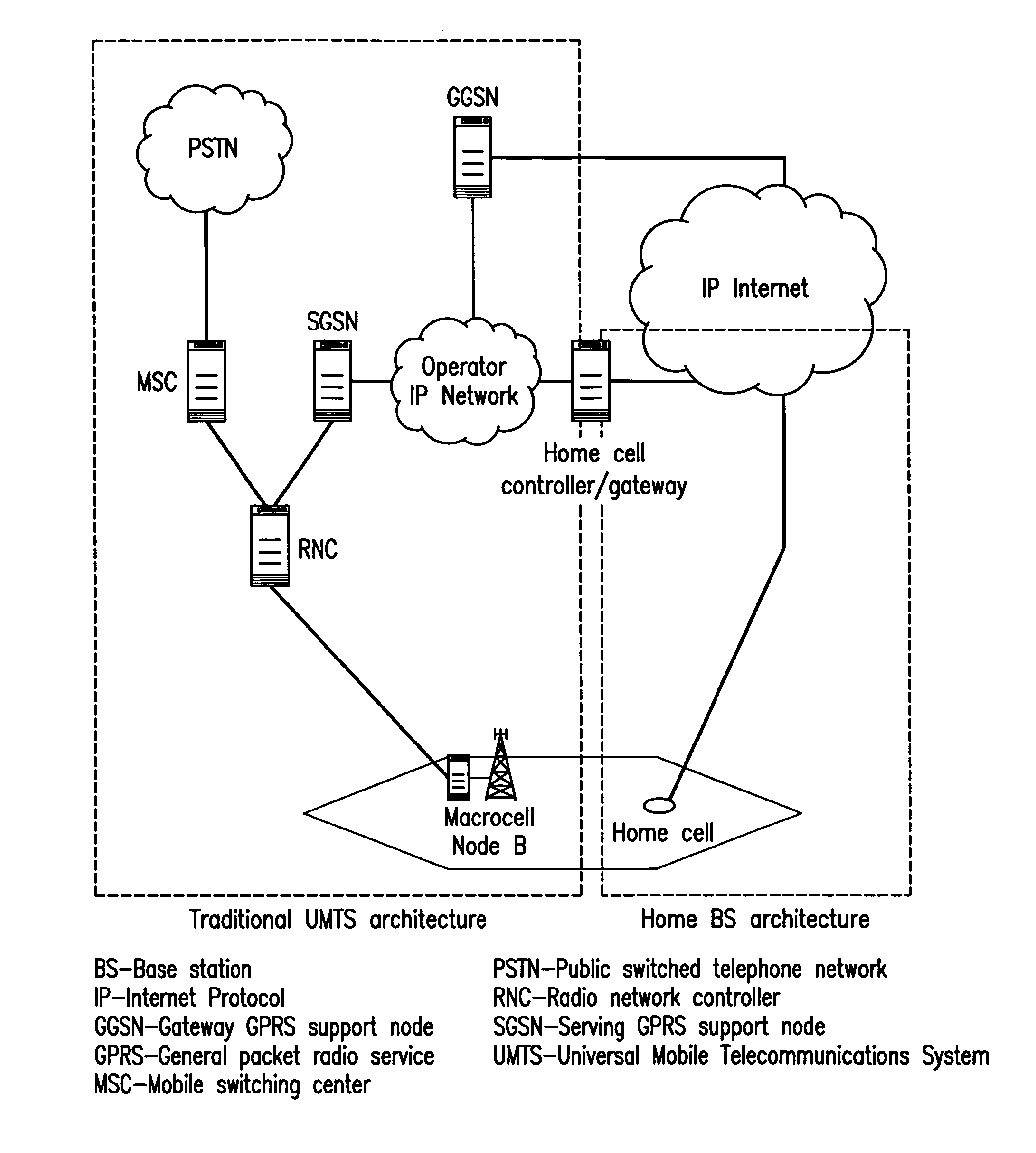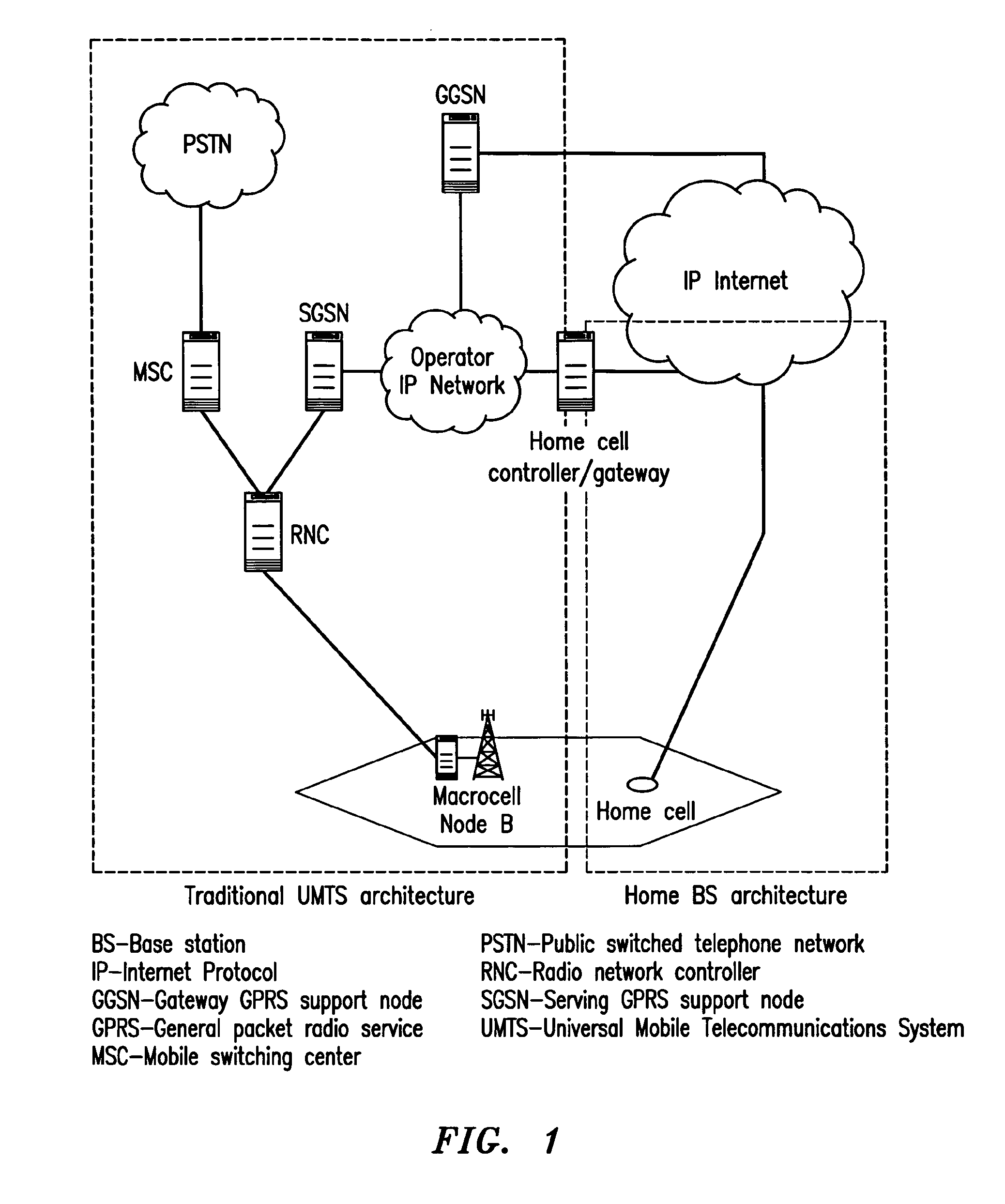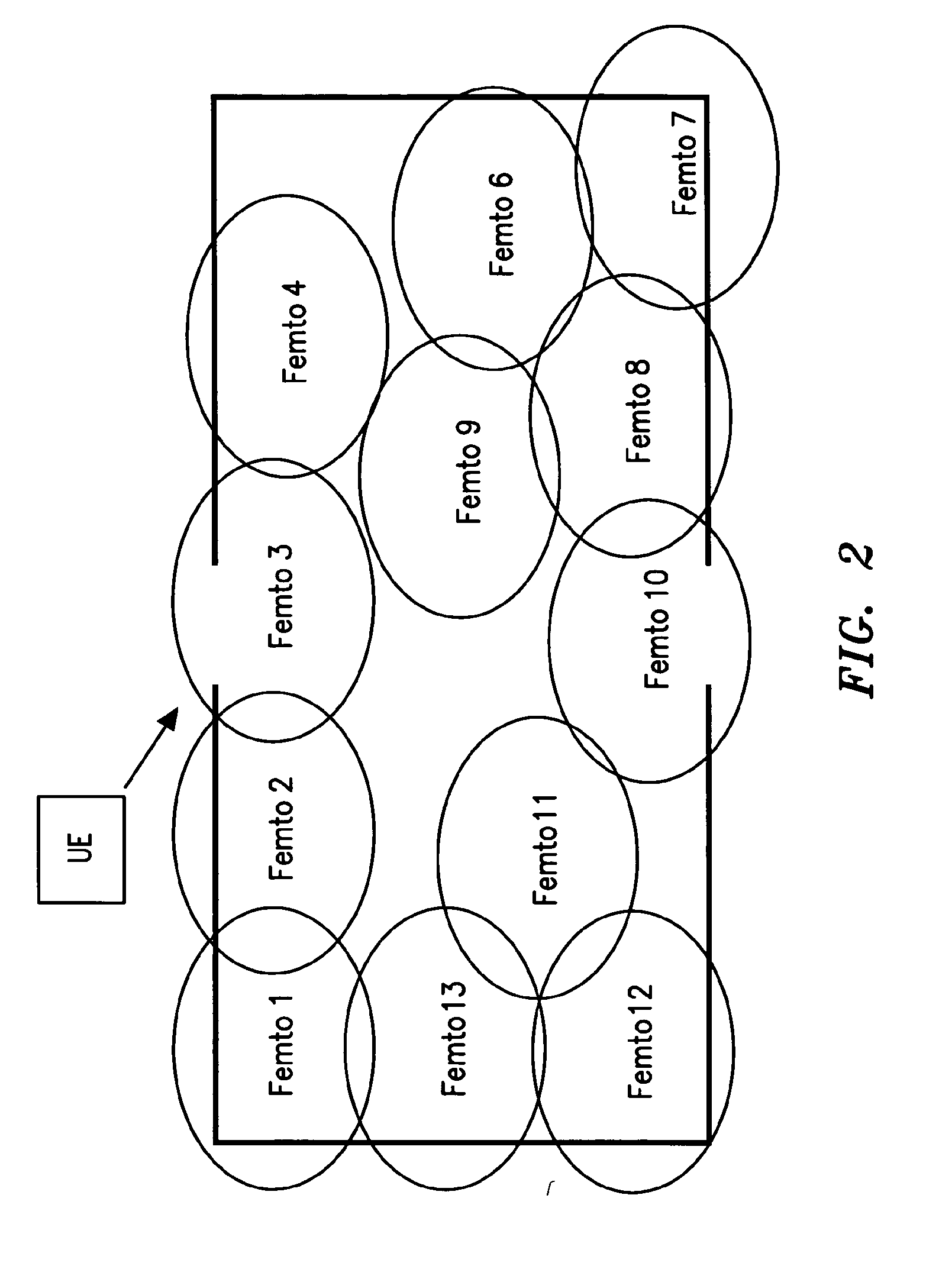Femtocell arrangements
a cell arrangement and cell technology, applied in the field of cell arrangement, can solve the problems of difficult for the target network to use measurements, the gateway cannot rely on the reported value of the target cell psc to uniquely identify, and the 3gpp standard message does not provide a mechanism for the source cell, etc., to achieve the effect of facilitating handover and extending the coverage area
- Summary
- Abstract
- Description
- Claims
- Application Information
AI Technical Summary
Benefits of technology
Problems solved by technology
Method used
Image
Examples
Embodiment Construction
[0019]With reference to FIG. 2, which is an illustrative arrangement not in accordance with the invention and provided for the purposes of understanding, an office building has a plurality of femtocells, Femto 1 to Femto 13, deployed within it. Those Femtos located at the edge of the office radiate outside it. Hence, when a UE approaches the entrance to the office, as shown, it may attempt to attach to any femtocell that meets its handover criteria. For example, the UE 2 may equally attempt to attach to Femto 1, 2, or 3 as it approaches the entrance to the office. Depending on the number of PSCs re-used within the deployment, the Femto Gateway may not be able to make a unique identification of the handover target cell from the information it receives from the UE. Thus, handover may be delayed and adversely affect the operation of the UE.
[0020]With reference to FIG. 3, in an arrangement in accordance with the invention, a plurality of Femtos 1 to 13 is deployed in an office or other ...
PUM
 Login to View More
Login to View More Abstract
Description
Claims
Application Information
 Login to View More
Login to View More - R&D
- Intellectual Property
- Life Sciences
- Materials
- Tech Scout
- Unparalleled Data Quality
- Higher Quality Content
- 60% Fewer Hallucinations
Browse by: Latest US Patents, China's latest patents, Technical Efficacy Thesaurus, Application Domain, Technology Topic, Popular Technical Reports.
© 2025 PatSnap. All rights reserved.Legal|Privacy policy|Modern Slavery Act Transparency Statement|Sitemap|About US| Contact US: help@patsnap.com



